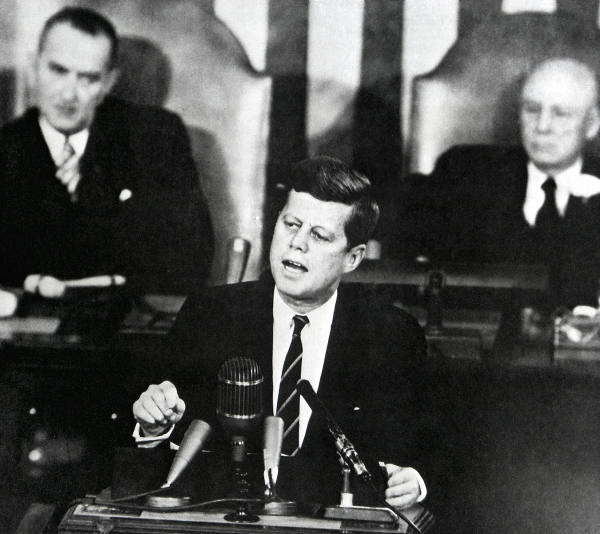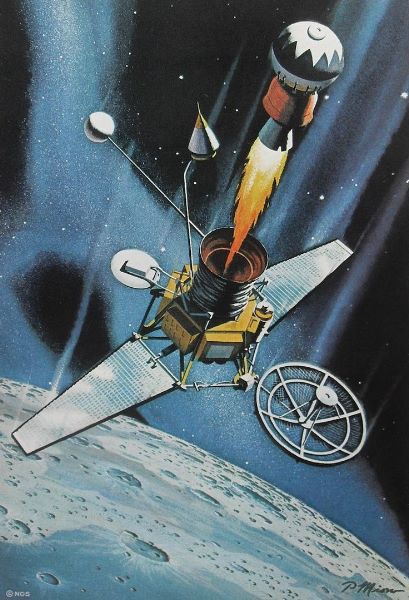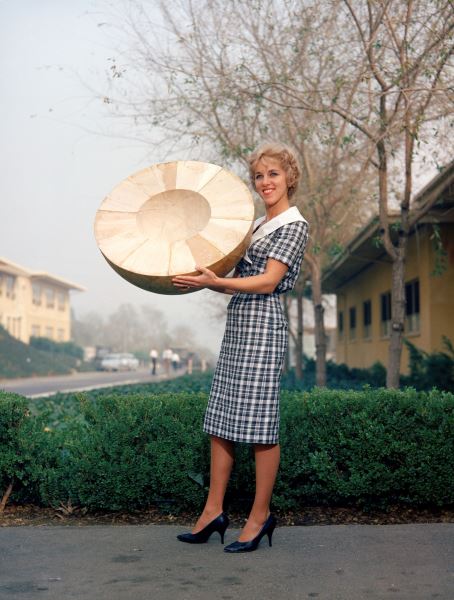
by Lawrence Klaes
After three failed attempts just this week, yesterday (July 21, 1961), astronaut Virgil I. “Gus” Grissom finally became this nation’s second (and the world's third) man to reach outer space. Grissom achieved another sort of milestone when his spacecraft unexpectedly sank after splashdown – and almost took the astronaut with it to the bottom of the Atlantic Ocean!

Following a very similar mission profile to that of his predecessor, Alan Shepard, back on May 5, Grissom rode his Mercury vessel, which he christened Liberty Bell 7 (complete with a painted white crack on the hull) in an arcing flight across the Atlantic Ocean from Cape Canaveral’s Launch Complex 5 (LC-5) in Florida.
The reliable Redstone booster hurled the ton-and-a-half craft, some 262.50 nautical miles downrange and 102.76 nautical miles above the Earth’s surface Grissom’s 15-minute suborbital flight lasted just nine seconds longer than Shepard’s. Of course, both flights were far shorter than Cosmonaut Gagarin's 90-minute flight in April. That's because the Redstone simply isn't powerful enough to send a Mercury into orbit, unlike the unnamed ICBM the Soviets are using.

Grissom’s flight was relatively short in both duration and distance, but our second American astronaut did get to experience a few moments of weightlessness, move his ship around, and view our home planet and the blackness of space as few have yet to do. His view was better than Shepard's: The two portholes on Freedom 7 were replaced with a larger single window.

The other improvement on Liberty Bell 7 was an explosive side hatch, to be activated in the event of emergency after landing. It was a wise precaution, but it almost caused the Mercury program's first fatality.
After Grissom's splashdown in the Atlantic, while he waited inside his space vessel to be rescued by four Sikovsky UH-34D helicopters dispatched from the aircraft carrier USS Randolph, the explosive release on the Liberty Bell 7 side hatch suddenly activated, blowing the heavy metal door across the water like a skipping stone. The Atlantic Ocean rushed into the now open spacecraft.
The Mercury astronaut prudently abandoned his vessel and waved frantically at the hovering helicopters to hoist him out of the drink: Grissom’s spacesuit was filling with sea water due to an open oxygen inlet connection and it began weighing him down. The rolls of Mercury dimes Gus had taken along in his suit to later hand out as souvenirs were also contributing to his inexorable dip beneath the ocean surface.
Unfortunately, the lead helicopter pilot interpreted Grissom’s reaction as an indication that he was okay, so they focused on trying to rescue the sinking Liberty Bell 7 by attaching a cable to it>.
The flooding Mercury spacecraft soon became too heavy for the helicopter to lift from the water, and it threatened to bring down the chopper and its crew as well. With no other choice, the rescue team detached Liberty Bell 7, which quickly sank to the bottom of the ocean over seventeen thousand feet below.
Attention finally returned to the desperate astronaut. Grissom grasped for the lowered harness. Exhausted, he slumped in the harness as he was retrieved for his trip back to the rescue ship.

It remains to be determined whether the premature explosion of the side hatch was caused by a mechanical defect or by manual release by Grissom, perhaps in a momentary panic. Gus himself swears he was lying calmly inside the spacecraft when the incident occurred. Whatever the real story, engineers will need to check the hatch escape system thoroughly to make sure it does not happen again – especially in space! Perhaps this system will be more fully tested during the next Mercury mission, another suborbital flight scheduled for September, with John Glenn the anticipated pilot.
Intriguingly, in his post-flight briefing this morning, attended by his family and fellow astronauts, Grissom admitted to feeling “scared” when his vessel lifted off towards space. The Mercury spacemen were chosen for their exceptional bravery and flying skills. Yet, in the end, they are human. Did Gus, who flew 100 combat missions during the Korean War and has had a long reputation as a top-notch pilot, have a moment of weakness when confronting the unknowns of outer space? Is this what contributed to the release of the spacecraft hatch that caused the loss of the Liberty Bell 7 and nearly the astronaut as well? Are there aspects about the vast realm beyond Earth that may make it impossible for a man to extensively explore and colonize space?

At the moment only three human beings have actually ventured into the alien void. All have returned alive and unharmed; however, in all of these cases they made only the briefest of ventures into space. Can someone survive the longer durations entailed in extended orbital missions? What about manned expeditions to the Moon and other worlds in our Solar System? Can man make it to those places in person and live to tell the tale?
In the end, there can be only one way to find out: by sending qualified men and eventually even women into the Final Frontier to confront what may be there and conquer it for the good of humanity.







